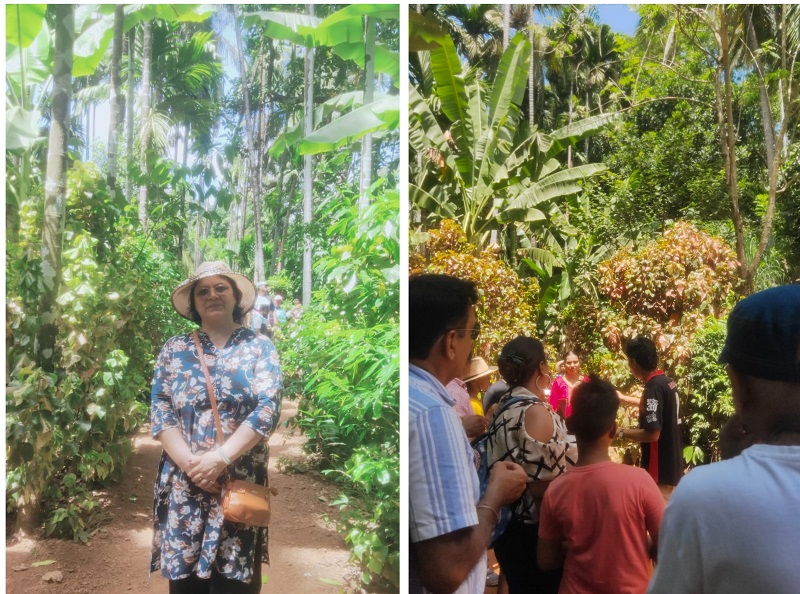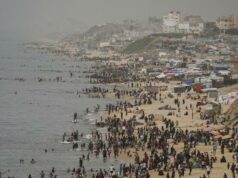Sahakari Spice Farm : Scripting International Culinary Experience
‘Variety’s the very spice of life, that gives it all the flavour’—William Cowper
Post by Col Satish Singh Lalotra

Since the advent of human civilization, human beings have always been in the eternal quest of bettering their lives from that of a ‘Hunter gatherer’ as a cave man dwelling in caves with primitive means of cooking ,sleeping and making their lives comfortable as deemed fit by them. This eternal quest slowly turned to take a turn for the better as he realized the advantages of a pastoral life depending upon agriculture as his primary source of survival coupled with the livestock that went with the fortunes of his as he tried to make the most of his life. Not satisfied with the status quo, the quest is still not over with the man even today exploring new and newer vistas of bettering his life be it the food he eats, the swanky dwellings of today he likes to live in or the luxuries of life he has got addicted to.
Since the primal need of man in the days of yore was sheer survival against the vagaries of weather or the constant internecine conflict he was engaged into with other groups of human beings, there rose a need to better his food quality stuffed with rich ingredients to impart him the so called strength to take on his detractors with the force he thought would vanquish them. Spices were one such set of ingredients which lent not only taste to the palate of his, but also acted as a natural preservative of food in those days when modern appliances like refrigerator were not even heard of much less thought of.
It is unknown when people first began to season their food with spices and herbs, but sesame seeds and oil appear to have been consumed since times immemorial. Garlic too was a component of human food from the very beginning of human existence. Many herbs and spices were definitely used as an ingredient in making delicious foods and beverages by the Romans. In ancient times, the most noteworthy uses of herbs and spices were in medicines, the preparation of holy oils, and emollients as well as aphrodisiacs. They were used by the priests in incantations, worship, and rituals as also as enchantments by the shamans to repel evil spirits. India as a country is the largest international spice market holding about 75 different varieties of exotic species of spices to include turmeric, coriander, black cardamom, cumin, ginger, garlic and cinnamon to name a few.
South Indian states of Kerala, Karnataka and Goa/Konkan hold number one position in spice farming with some of the best spice farms located in these states. Self and wife both ventured into one of the best spice farms of the country few days back while on a brief visit to Goa –‘Sahakari spice farms’ being run by the family of ‘Sahakari’(7th descendent ) farmers in a private cooperative venture for the last 240 years i.e. since the 17th century. Set on a 113 acres of prime land in ‘Ponda’, south Goa this farm is a veritable mix of international spices brought by the assiduous efforts of ‘Shahakari’ family over the last two centuries by way of close interactions with the visiting Dutch east Indians, Africans, Indonesian & Arabian diaspora while on their sojourn to India.
Since we had plenty of time on our hands while at Goa exploring its rich heritage, I desisted from the urge of visiting the beaches and churches as is the wont of a common tourist, and instead went in for very select places of interest with an eye on writing for the newspapers for such places to spread their fame far and wide. Curti, Ponda Goa, is home to ‘Sahakari’ spice plantation which can be very easily accessed by road either from Panjim-Belgaum highway or through the Margao-Belgaum bypass road. With us camping near the famous Benaulim beach hence it was more easy to wheel on to Margao and come on the bypass road, heading straight away for the spice farm. The farm has a very scientific and methodical way of organically growing spices, fruits and herbs on guided and informative tours.
The moment we entered the farm we were told to buy the entry tickets priced at rupees 500/- each that included a buffet lunch in the farm premises. Having armed with the tickets we were traditionally welcomed with a sprinkling of flower petals, garlanding and application of kumkum on the forehead. Thereafter we were told to form ourselves in a group of about 10 tourists under a very well informed guide for conducting around the farm. Francis D Souza our bubbling guide was a man of middle age, a local and a veteran in conducting of such tours for the last one decade. Having worked for about 6 years in the well-known pharma sector including ‘Vicco Vazrdanti’ he was more than a match for this job of a guide.
Since we had reached at lunch time the farm, we decided to go first for the guided tour and then partake in buffet lunch at leisure. Though the spice farm is 113 acres in its spread, the guided tour only exposes the tourists to about 2 acres of spice plantations which carry a maximum of grown spices in their various stages of growth. Francis D Souza started off with his precise briefing taking us to the various spots of spices growing from infancy to ripened stage. He explained to us the nut bearingtrees (Areca nut), also known as betel nut, Nutmeg (jaiphal , their benefits, any risks involved in their prolonged usage as well as the propensity of arecanuton our health since it has few compounds present in it like ‘Arecoline (a psychoactive ingredient similar to nicotine) which is carcinogenic to humans.
A fruit of Areca palm, which grows in much of the tropical Pacific (Melanesia and Micronesia), South Asia, South east Asia, and parts of east Africa, in the similar vein ‘Nutmeg’ trees are too a variety of Indonesia but were brought to India by the traders centuries ago that were later on cultivated by spice farmers in India. As mentioned above the moment you enter the spice farm you are transported to a world of aromatic bliss with the air filled in with fragrances of cardamom, cinnamon, pepper, nutmeg ,and countless other spices that thrive in this fertile land.
Francis D Souza, our guide took us on a knowledgeable tour wherein he explained to us the entire process of spice cultivation, from planting of the seeds to harvesting, and processing. He explained to us the medicinal properties of various spices, and the intricate art of blending them to create unique flavours. Sahakari spice farm offers more than just a visual and olfactory feast. You can take a rejuvenating herbal massage or a refreshing dip in the natural spring fed pool too. For the adventurous souls there is a trek also waiting for them through the surrounding forests where you can explore the diverse flora and fauna of the region.No visit to the Sahakari farm is complete without savouring the authentic Goan cuisine at its restaurant. The farm’s chefs use the freshest spices and organic produce grown on –site to create mouthwatering dishes that showcase the true flavours of Goa. From spicy curries to tangy pickles, every bite is a celebration of Goa’s culinary heritage. Sahakari farm goes beyond being a tourist attraction. It serves as a sustainable model for responsible farming practices and environmental conservation too. The farm has a souvenir shop too where you can purchase an array of aromatic spices, herbal teas, essential oils, and traditional handicrafts.
The farm actively promotes organic farming, water conservation as well as provides jobs to hundreds of local Goan population backed by supporting education and healthcare initiatives. Whether you are a nature lover, a food enthusiast, or simply seeking a tranquil escape, Sahakari farm is an experience that will leave indelible mark on your psyche and soul .The best time to visit this farm is in winters particularly from mid-November to February when the average foot fall exceeds a thousand per day.This weather provides pleasant temperatures in the range of 20 degree C to 30 degree C (68 F to 86F) Making it ideal for outdoor activities. But since we were only free in this part of the year due to my wife’s school holidays choices were very less for both of us.
We were told by our guide Francis that during the winters most of the spice plants are in full bloom and you can see the harvest and processing of various spices firsthand.The farm is bustling with spice farmers and you can freely interact with them to gain additional knowledge as a hands-on experience. During the monsoons Goa experiences a heavy downpour which may restrict your access to the farm areas additionally imposed by the restrictions owing to safety concerns. Though an additional attraction as per our guide is the typical elephant rides in the spice farms, this time they were missing from action due to few of them not well and rest kept on for rest and relief due to high temperatures prevailing in the spice farm. Be that as it may, the number of spice plantations which were shown to us by our guide Francis D Souza convinced us to our full convictions that though India retains number one position in the world with about 75 spices grown over here, almost maximum of them were a product of international bonhomie and camaraderie exhibited by these countries when their citizens brought them to the Indian shores centuries ago from distant lands like Indonesia, French Polynesia, East Africa, and the like.
After a brief sojourn to the spice gardens near Ponda, Goa lasting about 3 hours it seemed to us that our guide Francis had taken us on a virtual world tour laced with his own inimitable style of narration of this exotic place in the Western Ghats of India. No wonder he had infused in us the spice of our visit to Goa peppered with the enthusiasm to explore more of Goa. As William Cowper had rightly said—‘Variety’s the very spice of life that gives itall the flavor’.
(The writer is a retired army officer and can be approached on his email: slalotra4729@gmail.com)



